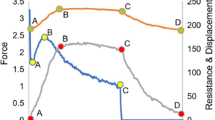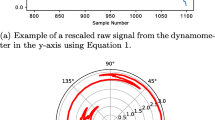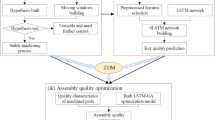Abstract
Spark-Assisted Chemical Engraving (SACE) requires precise control over key factors to overcome gas film instability and achieve reproducible optimal resolution and machining speed. This paper presents a substantial advancement in the SACE micromanufacturing technique by introducing a composite algorithm. This algorithm leverages deep learning and time series classification for sequence-to-sequence intelligent classification. Two distinct architectures, the Temporal Convolutional Network (TCN) and Long Short-Term Memory (LSTM), were subjected to evaluation. They were trained and optimized using Bayesian optimization, resulting in impressive accuracies of 97.18% for TCN and 96.44% for LSTM. The algorithm relies on TCN due to its superior performance for classifying current data points and subsequently computing derived parameters like gas film formation time, lifetime, mean discharge current and energy. Its versatility is demonstrated across various experimental conditions, showcasing its potential for rapid and accurate systematic studies. By highlighting the algorithm’s applicability in real-time process control for SACE, this study establishes a foundation for future advancements in the field of glass micromanufacturing.










Similar content being viewed by others
References
Barari A, Sales Guerra Tsuzuki M, Cohen Y, Macchi M (2021) Intelligent manufacturing systems towards industry 4.0 era. J Intell Manuf 32:1793–1796
Rosso Jr RS, Tsuzuki MdSG, Barari A, Macchi M (2022) Transition towards smart factories. Taylor & Francis
Kang HS, Lee JY, Choi S, Kim H, Park JH, Son JY, Kim BH, Noh SD (2016) Smart manufacturing: past research, present findings, and future directions. Int J Precis Eng Manuf-Green Technol 3:111–128
Barari A, Pop-Iliev R (2009) Reducing rigidity by implementing closed-loop engineering in adaptable design and manufacturing systems. J Manuf Syst 28(2–3):47–54
Barari A, Mordo S (2013) Effect of sampling strategy on uncertainty and precision of flatness inspection studied by dynamic minimum deviation zone evaluation. Int J Metrol Qual Eng 4(1):3–8
Lalehpour A, Berry C, Barari A (2017) Adaptive data reduction with neighbourhood search approach in coordinate measurement of planar surfaces. J Manuf Syst 45:28–47
Gohari H, Barari A, Kishawy H (2018) An efficient methodology for slicing nurbs surfaces using multi-step methods. Int J Adv Manuf Technol 95:3111–3125
Chen P, Wang S, Li B, Li F (2023) A novel geometric error compensation method for improving machining accuracy of spiral bevel gear based on inverse kinematic model. Int J Adv Manuf Technol, pp 1–17
Goodlet A, Koshy P (2015) Real-time evaluation of gap flushing in electrical discharge machining. CIRP Annals 64(1):241–244
Gohari H, Barari A, Kishawy H (2016) Using multistep methods in slicing 2 \(1/2\) dimensional parametric surfaces for additive manufacturing applications. IFAC-PapersOnLine 49(31):67–72
Allagui A, Wüthrich R (2009) Gas film formation time and gas film life time during electrochemical discharge phenomenon. Electrochimica Acta 54(23):5336–5343
Abou Ziki JD, Wüthrich R (2012) Tool wear and tool thermal expansion during micro-machining by spark assisted chemical engraving. Int J Adv Manuf Technol 61:481–486
Abou Ziki JD, Wüthrich R (2013) Forces exerted on the tool-electrode during constant-feed glass micro-drilling by spark assisted chemical engraving. Int J Mach Tools Manuf 73:47–54
Abou Ziki JD, Wüthrich R (2015) The machining gap during constant velocity-feed glass micro-drilling by spark assisted chemical engraving. J Manuf Process 19:87–94
Abou Ziki JD, Hof LA, Wüthrich R (2015) The machining temperature during spark assisted chemical engraving of glass. Manuf Lett 3:9–13
Sabahi N, Hajian M, Razfar MR (2018) Experimental study on the heat-affected zone of glass substrate machined by electrochemical discharge machining (ECDM) process. Int J Adv Manuf Techol 97:1557–1564
Sabahi N, Razfar MR (2018) Investigating the effect of mixed alkaline electrolyte (NaOH+ KOH) on the improvement of machining efficiency in 2D electrochemical discharge machining (ECDM). Int J Adv Manuf Technol 95:643–657
Ranganayakulu J, Srihari PV, Rao KV (2022) A strategy to improve performance in electrochemical discharge machining using periodic bi-directional tool rotation. Int J Adv Manuf Technol 123(5–6):1459–1476
Liu G, Tong H, Wu T, Li Y, Luo Y (2023) Chain discharging behavior induced by gas film expansion and its influence on the electrochemical discharge machining (ECDM) process. Int J Adv Manuf Technol 124(7–8):2755–2767
Jui SK, Kamaraj AB, Sundaram MM (2013) High aspect ratio micromachining of glass by electrochemical discharge machining (ECDM). J Manuf Process 15(4):460–466
Singh T, Dvivedi A (2018) On performance evaluation of textured tools during micro-channeling with ECDM. J Manuf Process 32:699–713
Wüthrich R, Hof L (2006) The gas film in spark assisted chemical engraving (SACE)-a key element for micro-machining applications. Int J Mach Tools Manuf 46(7–8):828–835
Hamed H, Eldiasty M, Seyedi-Sahebari S-M, Abou-Ziki JD (2023) Applications, materials, and fabrication of micro glass parts and devices: an overview. Materials Today
Hof LA, AbouZiki J (2017) Micro-hole drilling on glass substrates-a review. Micromachines 8(2):53
Bassyouni Z, Abou Ziki JD (2020) The capabilities of spark-assisted chemical engraving: a review. J Manuf Mater Process 4(4):99
Mani M, Feng S, Lane B, Donmez A, Moylan S, Fesperman R (2015) Measurement science needs for real-time control of additive manufacturing powder bed fusion processes
Sahebari SMS, Barari A, AbouZiki JD (2021) Neural network signal processing in spark assisted chemical engraving (SACE) micromachining. In: 2021 14th IEEE International conference on industry applications (INDUSCON), pp 1169–1176. IEEE
Baldán FJ, Benítez JM (2023) Complexity measures and features for times series classification. Exp Syst Appl 213:119227
Tchane Djogdom GV, Otis MJ-D, Meziane R (2023) Dynamic time warping–based feature selection method for foot gesture cobot operation mode selection. Int J Adv Manuf Technol, pp 1–21
Deng H, Runger G, Tuv E, Vladimir M (2013) A time series forest for classification and feature extraction. Inf Sci 239:142–153
Fulcher BD, Jones NS (2014) Highly comparative feature-based time-series classification. IEEE Trans Knowl Data Eng 26(12):3026–3037
Bondu A, Gay D, Lemaire V, Boullé M, Cervenka E (2019) Fears: a feature and representation selection approach for time series classification. In: Asian conference on machine learning, pp 379–394. PMLR
Gal Y, McAllister R, Rasmussen CE (2016) Improving PILCO with Bayesian neural network dynamics models. In: Data-efficient machine learning workshop, ICML, vol 4,pp 25
Tang W, Long G, Liu L, Zhou T, Jiang J, Blumenstein M (2020) Rethinking 1D-CNN for time series classification: a stronger baseline. arXiv:2002.10061
Chen X, Zhang B, Gao D (2021) Bearing fault diagnosis base on multi-scale CNN and LSTM model. J Intell Manuf 32:971–987
Moor M, Horn M, Rieck B, Roqueiro D, Borgwardt K (2019) Temporal convolutional networks and dynamic time warping can drastically improve the early prediction of sepsis. arXiv:1902.01659
Fujieda S, Takayama K, Hachisuka T (2017) Wavelet convolutional neural networks for texture classification. arXiv:1707.07394
Karthik R, Hariharan M, Anand S, Mathikshara P, Johnson A, Menaka R (2020) Attention embedded residual CNN for disease detection in tomato leaves. Appl Soft Comput 86
Huang J, Zhou W, Li H, Li W (2018) Attention-based 3D-CNNs for large-vocabulary sign language recognition. IEEE Trans Circuits Syst Video Technol 29(9):2822–2832
Wen T-H, Gasic M, Mrksic N, Su P-H, Vandyke D, Young S (2015) Semantically conditioned LSTM-based natural language generation for spoken dialogue systems. arXiv:1508.01745
Lea C, Flynn MD, Vidal R, Reiter A, Hager GD (2017) Temporal convolutional networks for action segmentation and detection. In: Proceedings of the IEEE conference on computer vision and pattern recognition, pp 156–165
Liu C, Zhang L, Wu C (2019) Direct remaining useful life prediction for rolling bearing using temporal convolutional networks. In: 2019 IEEE Symposium series on computational intelligence (SSCI), pp 2965–2971. IEEE
Bai S, Kolter JZ, Koltun V (2018) An empirical evaluation of generic convolutional and recurrent networks for sequence modeling. arXiv:1803.01271
Ingolfsson TM, Hersche M, Wang X, Kobayashi N, Cavigelli L, Benini L (2020) Eeg-tcnet: an accurate temporal convolutional network for embedded motor-imagery brain–machine interfaces. In: 2020 IEEE International conference on systems, man, and cybernetics (SMC), pp 2958–2965 . IEEE
Pandey A, Wang D (2019) Tcnn: temporal convolutional neural network for real-time speech enhancement in the time domain, In: ICASSP 2019-2019 IEEE international conference on acoustics, speech and signal processing (ICASSP), pp 6875–6879. IEEE
Tang P, Du P, Xia J, Zhang P, Zhang W (2021) Channel attention-based temporal convolutional network for satellite image time series classification. IEEE Geosci Remote Sens Lett 19:1–5
Agron DJS, Lee J-M, Kim D-S (2021) Nozzle thermal estimation for fused filament fabricating 3D printer using temporal convolutional neural networks. Appl Sci 11(14):6424
Hochreiter S, Schmidhuber J (1997) Long short-term memory. Neural Comput 9(8):1735–1780
Graves A, Mohamed A-r, Hinton G (2013) Speech recognition with deep recurrent neural networks. In: 2013 IEEE International conference on acoustics, speech and signal processing, pp 6645–6649. Ieee
Li E, Bedi S, Melek W (2023) Anomaly detection in three-axis CNC machines using LSTM networks and transfer learning. Int J Adv Manuf Technol, pp 1–14
Oshida T, Murakoshi T, Zhou L, Ojima H, Kaneko K, Onuki T, Shimizu J (2023) Development and implementation of real-time anomaly detection on tool wear based on stacked LSTM encoder-decoder model. Int J Adv Manuf Technol, pp 1–16
Shi Z, Mamun AA, Kan C, Tian W, Liu C (2022) An LSTM-autoencoder based online side channel monitoring approach for cyber-physical attack detection in additive manufacturing. J Intell Manuf, pp 1–17
Teng M (2010) Anomaly detection on time series. In: 2010 IEEE International conference on progress in informatics and computing, vol 1, pp 603–608. IEEE
Kolhekar KR, Sundaram M (2018) Study of gas film characterization and its effect in electrochemical discharge machining. Precis Eng 53:203–211
Funding
The authors acknowledge the funding and support received from the Natural Sciences and Engineering Research Council of Canada (NSERC) through its Discovery Grant program.
Author information
Authors and Affiliations
Contributions
Seyed Mahmoud Seyedi Sahebari: Methodology, Software, Formal analysis, Investigation, Resources, Data curation, Writing - original draft, Writing - review Editing, Visualization. Zahraa Bassyouni: Software, Investigation, Resources, Writing - review Editing. Ahmad Barari: Methodology, Conceptualization, Validation, Supervision, Funding acquisition. Jana D. Abou Ziki: Methodology, Conceptualization, Validation, Writing - review Editing, Supervision, Project administration, Funding acquisition.
Corresponding author
Ethics declarations
Competing of interest
The authors declare that they have no known competing financial interests or personal relationships that could have appeared to influence the work reported in this paper.
Additional information
Publisher's Note
Springer Nature remains neutral with regard to jurisdictional claims in published maps and institutional affiliations.
Rights and permissions
Springer Nature or its licensor (e.g. a society or other partner) holds exclusive rights to this article under a publishing agreement with the author(s) or other rightsholder(s); author self-archiving of the accepted manuscript version of this article is solely governed by the terms of such publishing agreement and applicable law.
About this article
Cite this article
Seyedi Sahebari, S.M., Bassyouni, Z., Barari, A. et al. Intelligent characterization of spark-assisted chemical engraving (SACE) process using time series classification. Int J Adv Manuf Technol 130, 945–960 (2024). https://doi.org/10.1007/s00170-023-12692-4
Received:
Accepted:
Published:
Issue Date:
DOI: https://doi.org/10.1007/s00170-023-12692-4






